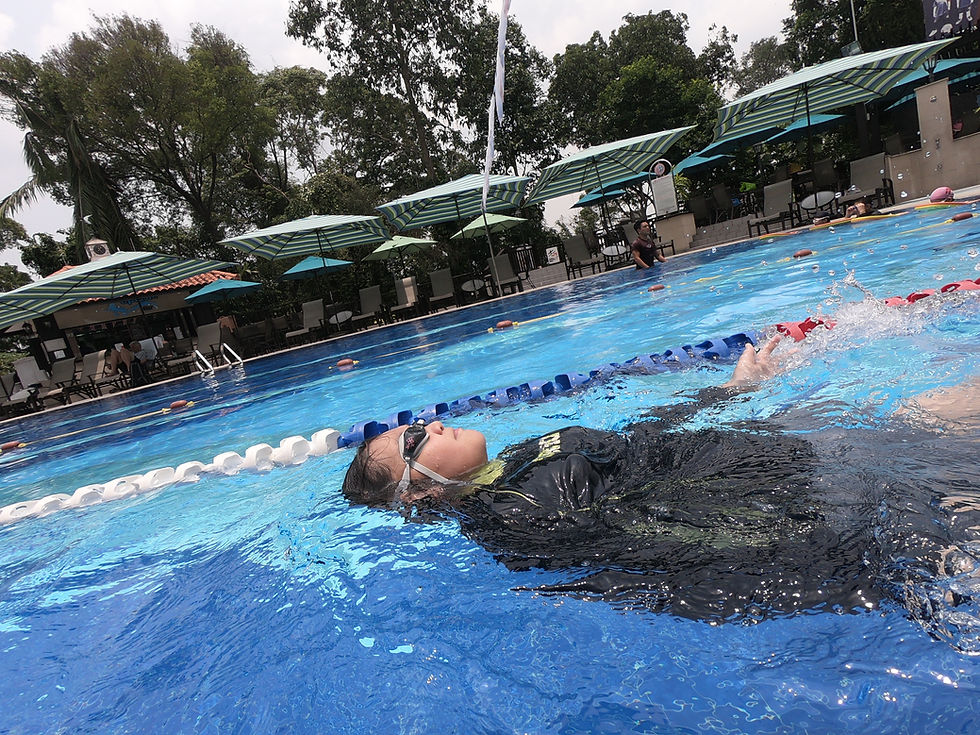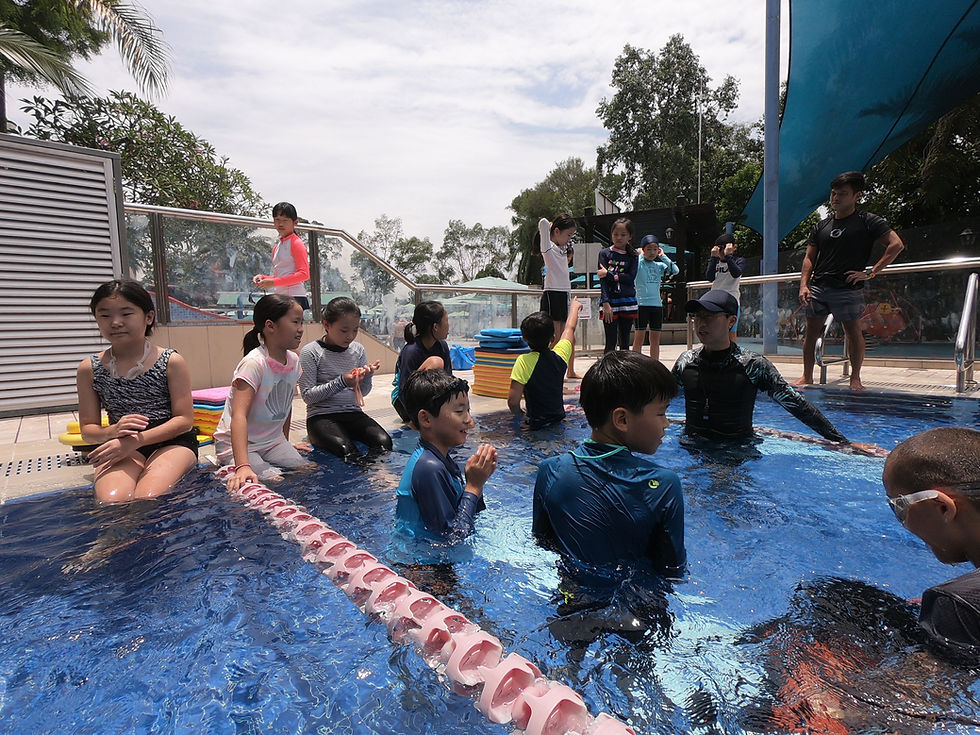Gentle Techniques for Submerging Toddlers: Building Water Comfort With Care
- SG Sink Or Swim

- Jul 29
- 3 min read

Introducing toddlers to submersion is a crucial step in teaching water safety and developing early swimming skills. However, the process must be done gently, gradually, and positively to build trust and prevent fear. The goal is to help toddlers become comfortable going underwater, not to force them.
This guide outlines gentle, child-centered techniques for submerging toddlers, making the experience both safe and enjoyable for them and stress-free for parents.
🧠 Why Submersion Skills Matter
Controlled and comfortable submersion builds:
Breath control
Confidence in the water
Body awareness
A foundation for future strokes and safety
But rushed or forced submersion can lead to fear and resistance. It’s all about timing, technique, and trust.
🍼 When Are Toddlers Ready for Submersion?
Look for signs of readiness, such as:
Enjoying splashing and water play
Comfortable having water poured on the face
Responding positively to games involving head immersion
Ability to hold their breath briefly when cued
🕒 There’s no “perfect” age — readiness varies by child.
🌊 Gentle Submersion Techniques That Work
1. Face Pouring with Cue Words
How it helps: Gets toddlers used to water on their face.
How to do it:
Use a cup or watering can to gently pour water over their face.
Always use a verbal cue like “Ready—go!” before pouring.
Repeat with smiles and praise.
✅ Teaches breath anticipation in a low-pressure way.
2. Blowing Bubbles Together
How it helps: Encourages head immersion playfully.
How to do it:
Sit together in shallow water or on pool steps.
Model blowing bubbles with your mouth, then nose.
Turn it into a game: “Can you blow like a fish?”
✅ Builds comfort putting the mouth and face underwater.
3. Tunnel Swims
How it helps: Encourages short, fun submersions.
How to do it:
One adult holds arms out to make a “tunnel” in shallow water.
Encourage the toddler to swim through with your guidance.
Use “Ready—go!” then gently guide them under and through.
✅ Associates going underwater with a game and clear cue.
4. Submersion After Jumps
How it helps: Makes going underwater part of play.
How to do it:
Let the toddler jump from a step or ledge into your arms.
Use “Ready—go!” and gently guide their face underwater as they enter.
Immediately lift them up and praise.
✅ Reinforces fun and safety together.
5. Front Glide with Brief Submersion
How it helps: Introduces underwater movement.
How to do it:
Hold your child under the arms facing you.
Say “Ready—go!” and gently glide them a short distance underwater toward another adult or the wall.
Keep it short and celebrate success.
✅ Builds trust and breath-holding confidence.
❗ What to Avoid
❌ Forcing submersion before a child is ready
❌ Dunking without warning
❌ Using fear-based tactics (“you have to go under”)
❌ Ignoring signs of distress (clinging, crying, stiff posture)
📌 Always go at the child’s pace.
🧸 Tips for a Positive Experience
Use favorite toys to distract and engage
Sing songs that involve splashing or movement
Practice short sessions — quality over quantity
End on a happy note, even if no submersion occurred
Celebrate every small win (“You blew such big bubbles today!”)
🏁 Final Thoughts
Submerging toddlers can and should be a gentle, joyful milestone in their water journey. By using respectful, play-based techniques, you help build a foundation of trust, comfort, and water safety that will support swimming success in the years ahead.
Remember: it’s not about how fast they go under — it’s how safe and supported they feel when they do.





Comments